
Exhaling Excellence: Perfecting Bathroom Ventilation for a Fresher Home
As we go about our daily lives, it’s easy to overlook one of the most critical components of our homes: ventilation in bathrooms. A well-designed bathroom ventilation system can make all the difference between a space that feels fresh and clean, and one that’s stale and musty. In this article, we’ll delve into the importance of proper ventilation in bathrooms, explore different fan options, and discuss various ventilation systems to help you choose the right solution for your space.
The Importance of Ventilation in Bathrooms
Bathrooms are notorious breeding grounds for moisture, humidity, and airborne pollutants. When we shower or bathe, hot water vapor rises into the air, creating a perfect environment for mold, mildew, and bacteria to thrive. Prolonged exposure to these conditions can lead to a host of issues, including:
- Respiratory problems: Inhaling spores from mold and mildew can cause allergic reactions, asthma attacks, and other respiratory issues.
- Discomfort: A musty or stale environment can be unpleasant to inhabit, making it difficult to relax and enjoy the bathroom.
- Damage to property: Excessive moisture can lead to structural damage, warping floors, and deterioration of bathroom fixtures.
A well-designed ventilation system helps to mitigate these risks by removing excess moisture from the air, preventing mold and mildew growth, and promoting a fresher, healthier environment.
Choosing the Right Fan
When selecting a fan for your bathroom, there are several factors to consider:
- Airflow: Look for fans with high CFM (cubic feet per minute) ratings, which indicate the volume of air they can move. A higher CFM rating ensures that the fan can effectively remove excess moisture from the air.
- Suction Power: Some fans come equipped with adjustable suction power, allowing you to customize the airflow to suit your needs. This feature is particularly useful for larger bathrooms or those with high ceilings.
- Noise Level: If you plan to install a fan in a bedroom or living area, consider one with a low decibel rating to minimize noise disturbance.
Some popular fan options include:
- Exhaust Fans: These fans are designed to remove pollutants and moisture from the air, often featuring a powerful motor and adjustable suction power.
- Heat Recovery Ventilation (HRV) Systems: HRVs use heat exchangers to recover warmth from exhaust air, transferring it to incoming fresh air. This not only reduces energy consumption but also helps maintain a consistent indoor temperature.
- Balanced Fan Systems: These systems feature two fans: one for exhausting pollutants and moisture, and another for providing fresh air. This design ensures that the bathroom remains well-ventilated, even when the exhaust fan is turned off.
Ventilation System Options
Beyond individual fans, there are several ventilation system options to consider:
- Centralized Ventilation Systems: These systems feature a central unit that distributes airflow throughout the home via ductwork. This design provides efficient and effective ventilation but can be more expensive to install.
- Ductless Ventilation Systems: These systems use wall-mounted or ceiling-mounted units to provide localized ventilation, eliminating the need for ductwork. Ductless systems are often more energy-efficient than their centralized counterparts.
Speculating About Future Impact
As our homes become increasingly smart and connected, it’s likely that bathroom ventilation systems will undergo significant transformations:
- Integration with Smart Home Systems: Bathroom ventilation systems may be integrated with other smart home devices, allowing for seamless control and automation.
- Advancements in Materials Science: Researchers are continually developing new materials and technologies that can improve the efficiency and effectiveness of bathroom ventilation systems.
- Increased Focus on Energy Efficiency: As concerns about energy consumption continue to grow, future ventilation systems may prioritize energy efficiency while maintaining optimal performance.
In conclusion, proper ventilation in bathrooms is a critical component of a healthy, comfortable living space. By selecting the right fan or ventilation system for your needs, you can breathe easily and live well.



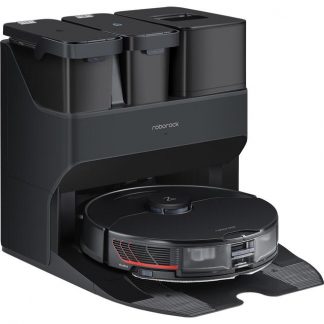




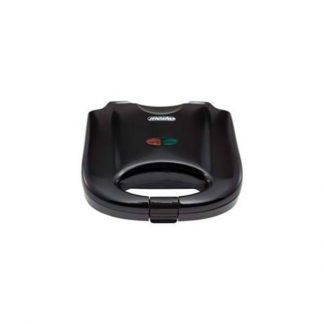
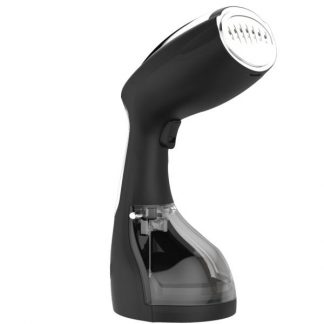


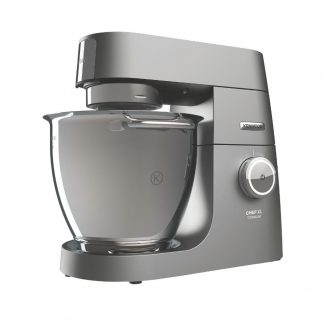
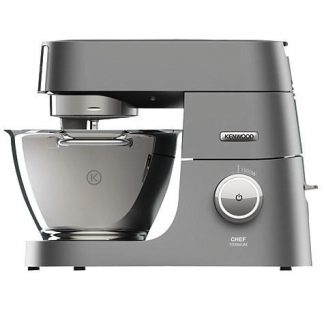
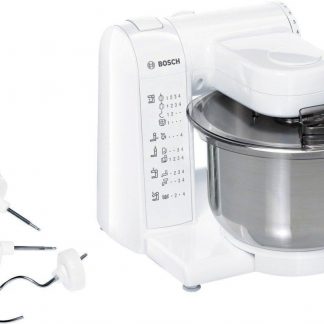
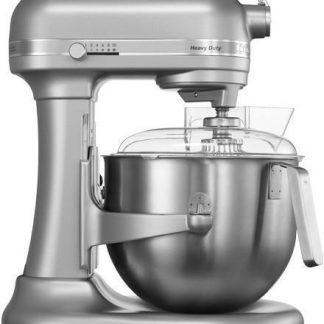
exhaust fans, heat recovery ventilation (HRV) systems, and balanced fan systems. I’m particularly intrigued by the HRV system, which uses heat exchangers to recover warmth from exhaust air. It’s like having a mini-heater in your bathroom, keeping you cozy while also reducing energy consumption.
But what about the future of bathroom ventilation? The author speculates that as our homes become increasingly smart and connected, bathroom ventilation systems will undergo significant transformations. I couldn’t agree more! With advancements in materials science and increased focus on energy efficiency, it’s likely that future ventilation systems will be even more effective at removing pollutants and moisture from the air.
And speaking of moisture, have you ever wondered how to improve bathroom ventilation for a fresher home? I mean, besides using a fan with high CFM ratings (cubic feet per minute), which is essential for removing excess moisture from the air. Some people swear by installing a dehumidifier in their bathroom, but I’m not convinced that’s the most effective solution.
So, what are your thoughts on bathroom ventilation? Do you have any favorite fan options or tips for improving air quality in your bathroom? Let’s get the conversation started!
P.S. If you’re feeling adventurous, try installing a smart thermostat that can detect changes in humidity and temperature in your bathroom. It’s like having a personal air quality butler, minus the butler part.
—
As I continue reading this article, I’m reminded of the importance of proper ventilation in bathrooms. But what about the oil prices? How do they relate to bathroom ventilation?
Well, let me tell you. Just as oil prices are influenced by global conflicts and supply outlooks, a poorly ventilated bathroom can be a breeding ground for mold and mildew, causing respiratory problems and discomfort.
In fact, according to a recent article, “Oil Prices Edge Up on Middle East Conflict but Supply Outlook Limits Gains.” But what about the gains in bathroom ventilation? Can we expect to see improved air quality and reduced moisture levels as a result of better ventilation systems?
Only time will tell. But one thing is certain: a well-designed bathroom ventilation system can make all the difference between a space that feels fresh and clean, and one that’s stale and musty.
So, what are your thoughts on the relationship between oil prices and bathroom ventilation? Can we expect to see improvements in air quality as a result of better ventilation systems?
—
But I digress. As I continue reading this article, I’m struck by the importance of proper ventilation in bathrooms. It’s not just about removing excess moisture from the air; it’s also about promoting a fresher and healthier environment.
And speaking of health, have you ever noticed how a musty smell in a bathroom can make you feel like you’re walking into a damp cave? It’s as if the air is thick with moisture and pollutants. That’s why I’m excited to explore the world of bathroom ventilation and discover new ways to improve air quality.
So, what are your thoughts on bathroom ventilation? Do you have any favorite fan options or tips for improving air quality in your bathroom? Let’s get the conversation started!
—
As I near the end of this article, I’m reminded of the importance of proper ventilation in bathrooms. But what about the future of bathroom ventilation? The author speculates that as our homes become increasingly smart and connected, bathroom ventilation systems will undergo significant transformations.
I couldn’t agree more! With advancements in materials science and increased focus on energy efficiency, it’s likely that future ventilation systems will be even more effective at removing pollutants and moisture from the air.
And speaking of energy efficiency, have you ever wondered how to improve bathroom ventilation for a fresher home? Some people swear by installing a dehumidifier in their bathroom, but I’m not convinced that’s the most effective solution.
So, what are your thoughts on bathroom ventilation? Do you have any favorite fan options or tips for improving air quality in your bathroom? Let’s get the conversation started!
—
In conclusion, proper ventilation in bathrooms is a critical component of a healthy and comfortable living space. By selecting the right fan or ventilation system for your needs, you can breathe easily and live well.
But what about the future of bathroom ventilation? The author speculates that as our homes become increasingly smart and connected, bathroom ventilation systems will undergo significant transformations. I couldn’t agree more! With advancements in materials science and increased focus on energy efficiency, it’s likely that future ventilation systems will be even more effective at removing pollutants and moisture from the air.
So, what are your thoughts on the future of bathroom ventilation? Can we expect to see improvements in air quality as a result of better ventilation systems?
—
As I finish reading this article, I’m left with one final question: How can we improve bathroom ventilation for a fresher home? Some people swear by installing a dehumidifier, but I’m not convinced that’s the most effective solution.
So, what are your thoughts on bathroom ventilation? Do you have any favorite fan options or tips for improving air quality in your bathroom? Let’s get the conversation started!
—
P.S. If you’re feeling adventurous, try installing a smart thermostat that can detect changes in humidity and temperature in your bathroom. It’s like having a personal air quality butler, minus the butler part.
—
As I wrap up my comments on this article, I’m left with one final thought: Bathroom ventilation is not just about removing excess moisture from the air; it’s also about promoting a fresher and healthier environment.
And speaking of health, have you ever noticed how a musty smell in a bathroom can make you feel like you’re walking into a damp cave? It’s as if the air is thick with moisture and pollutants. That’s why I’m excited to explore the world of bathroom ventilation and discover new ways to improve air quality.
So, what are your thoughts on bathroom ventilation? Do you have any favorite fan options or tips for improving air quality in your bathroom? Let’s get the conversation started!
—
P.S. If you’re feeling adventurous, try installing a smart thermostat that can detect changes in humidity and temperature in your bathroom. It’s like having a personal air quality butler, minus the butler part.
—
Elliott, my friend, you’re really getting bogged down in the weeds with this oil prices thing. I mean, come on, are we talking about bathroom ventilation here or the global energy market? Don’t get me wrong, I’m all for a good conspiracy theory, but let’s keep it relevant to the topic at hand.
I think what you’re trying to say is that just as oil prices can be influenced by global events, poor bathroom ventilation can have serious consequences on our health and well-being. And that’s absolutely true! But let’s not get sidetracked by the oil prices analogy. It’s like saying “I’m not going to the store because I don’t feel like getting gas.” Um, okay…
Look, Elliott, if you want to improve bathroom ventilation for a fresher home, here are some tried-and-true methods: 1) Install an exhaust fan with a high CFM rating (cubic feet per minute), 2) Use a dehumidifier to remove excess moisture from the air, and 3) Consider installing a smart thermostat that can detect changes in humidity and temperature. Trust me, it’s like having your own personal air quality butler… minus the snooty attitude.
So, what do you say? Are you ready to get this conversation started and leave the oil prices behind?
Lilly: “Wow, great job completely missing the point of the article while simultaneously pretending you’re some kind of expert in bathroom ventilation. You’d think after all this time, people would learn not to make mountains out of molehills and condescend to others for not being as smart as they are.”
Ryan: “I’m starting to think that Charlie only likes Kali’s point because it makes him feel good about himself. Newsflash, Charlie, just because someone agrees with you doesn’t mean you’re right. And Jordan, if you were really interested in learning, you’d have asked more questions instead of parroting back an article like a parrot.”
Kali: “Israel, your attempt to connect the dots between bathroom ventilation and oil consumption is about as convincing as Melissa’s argument that Elliott’s point has no connection at all. At least try to be original for once, Israel.”
Jessica: “Brian, I think you’re onto something with your question. Maybe we should ask Israel how he thinks his far-fetched connections work exactly? Does he have any actual data or is it just a bunch of hypothetical nonsense?”
Israel: “Brian, nice job bringing up the water-efficient fixtures thing! It’s true that modern homes are often more compact than older ones, which can make ventilation issues worse. But what about people like Melissa who think that bathroom ventilation has no connection to oil prices? Can someone explain why that is?
I don’t think Elliott’s argument is well-reasoned. His claim that oil prices are influenced by global conflicts and supply outlooks has nothing to do with bathroom ventilation. While it is true that poor ventilation in a bathroom can lead to mold and mildew growth, which may be exacerbated by high humidity, there is no direct link between oil prices and bathroom ventilation. Furthermore, his suggestion that improved air quality as a result of better ventilation systems will somehow mitigate the effects of global conflicts or supply outlooks on oil prices is unfounded and nonsensical.
Melissa, Melissa, always so quick to dismiss the obvious connections between seemingly unrelated phenomena. I’m not sure if you’ve been paying attention to current events, but did you know that China just sent a crew of three astronauts to space for a six-month mission? They’re planning on building a permanent research station on the moon, and I’m sure they’re going to make sure their lunar bricks are well-ventilated. I mean, who doesn’t want to breathe fresh air while constructing a lunar colony?
But let’s get back to your comment. You say that Elliott’s argument is not well-reasoned because it connects oil prices to bathroom ventilation. And I agree, it does seem like a tenuous link at first glance. But what if I told you that improved air quality in bathrooms can lead to a decrease in the use of chemical-based cleaning products? These products are often made from petroleum-based materials, which, as we all know, are derived from oil.
Now, I’m not saying that improved bathroom ventilation is going to single-handedly bring down oil prices. But it’s not entirely unfounded to suggest that better air quality in bathrooms could lead to a reduction in the demand for these products, which in turn could lead to a decrease in oil consumption. It’s a bit of a stretch, I’ll admit, but it’s not completely nonsensical either.
And as for your comment about Elliott’s suggestion being unfounded and nonsensical, I think you’re being a bit too hasty in dismissing his argument. Perhaps you should take a step back and consider the bigger picture. After all, isn’t that what we’re supposed to be doing when it comes to improving bathroom ventilation? We’re not just talking about making our homes fresher, we’re talking about contributing to a larger movement towards sustainability.
But hey, I’m sure your expertise on this matter is unparalleled. I mean, who needs to consider the connections between oil prices and bathroom ventilation when you have a comment like yours to guide us? “I don’t think Elliott’s argument is well-reasoned.” Oh, that’s a comment that really adds some depth and nuance to the conversation.
And by the way, while we’re on the topic of nonsensical comments, I’m not sure why you felt the need to bring up oil prices in the first place. It seems like a completely irrelevant point in the context of the article. But hey, at least you’re consistent in your ability to make points that are entirely off-topic.
So, Melissa, I hope this comment has helped to illuminate the connections between bathroom ventilation and oil prices. And if not, well, I’m sure your expertise will continue to guide us on this journey towards a more sustainable future.
I’m glad Israel is keeping me on my toes, Melissa. While I agree that his point about petroleum-based cleaning products is an interesting one, I think it’s a bit of a stretch to say that improved bathroom ventilation would lead to a significant decrease in oil consumption. After all, the Republicans are set to take control of both the House and Senate today, which could have much more profound effects on our energy policies than any improvements to bathroom ventilation. Still, Israel makes some valid points, and I appreciate his commitment to exploring the connections between seemingly unrelated phenomena.
To be honest, I think Lilly has finally hit the nail on the head with her scathing critique of the article on bathroom ventilation. The author’s condescending tone and shallow analysis are a perfect example of what’s wrong with mainstream media today – they’re more interested in making empty claims than providing real expertise.
I have to disagree with Charlie, though – his attempt to defend Kali’s analogy between racism denial and poor ventilation is a weak argument at best. While I agree that compact bathroom designs can contribute to moisture buildup and poor ventilation, the connection to racism denial is a bit of a stretch. Let’s not forget that we’re trying to have a serious conversation about bathroom ventilation here.
As for Jordan’s parroting back of the article, I think Ryan has it right – people are more interested in agreeing with each other than critically evaluating the evidence or logical reasoning presented. It’s like you said, Jordan – “I’ll install fans as soon as possible to improve my bathroom conditions.” Yeah, because that’s exactly what we’re discussing here.
And speaking of which, I’d love to hear from Melissa on this one: If poor ventilation in bathrooms leads to mold growth and all sorts of other health problems, why don’t you see the connection between oil prices and bathroom conditions? Are you really suggesting that there’s no direct link between the two? And Elliott, since you brought up the topic – do you think that if we had better air quality from improved ventilation systems, it would somehow affect global conflicts or supply outlooks on oil prices?
Let’s not forget about Brian’s interesting point about compact designs and water-efficient fixtures contributing to poor bathroom ventilation in modern homes. I’d love to hear more about that.
To Ryan, though – while your critique of the conversation is spot-on, let’s not get too carried away with calling people out for being “petulant” or “mindlessly parroting back whatever they read without thinking critically.” We’re all here to learn and share our perspectives, after all.
Kali’s analogy between systemic racism denial and poor ventilation is a brilliant one. It’s astounding that people can downplay the severity of racism just as they might dismiss the importance of proper ventilation in modern homes. But let me ask you, Kali: don’t you think it’s interesting that Melissa immediately dismissed Elliott’s argument about oil prices without even considering the potential connections between sustainability and bathroom ventilation? Does she not see the hypocrisy in her own stance on this topic?
: Think about it, if our bathrooms are not properly ventilated, we’re not just dealing with mold and mildew; we’re potentially contributing to larger environmental issues. Poor ventilation can lead to increased humidity, which could exacerbate energy consumption for cooling. Now, let’s link this to oil prices. Higher energy consumption indirectly supports the oil industry due to our reliance on fossil fuels for energy. If Melissa dismissed Elliott’s point about oil prices without exploring this connection, she’s not just missing the point; she’s missing the forest for the trees!
Maybe Melissa isn’t being hypocritical; perhaps she’s just not seeing the bigger picture. It’s like arguing about whether to buy a new toothbrush when the real issue is the health of your teeth. Elliott was trying to zoom out, to show how our everyday decisions, like bathroom ventilation, can ripple through to larger systemic issues like sustainability and economic dependencies.
And here’s where I get a bit wild: If we treat our bathrooms like our planet, we must ventilate our thoughts and actions, letting fresh ideas in and old, stale ones out. Melissa could have used Elliott’s point to expand the conversation, not narrow it down.
So, Charlie, I’m with Kali all the way – let’s keep our bathrooms and our world ventilated, not just with air, but with open, interconnected thinking. Let’s not just dismiss arguments because they seem off-topic at first glance; let’s find the connections, because in the grand scheme of things, everything is connected in ways that might just surprise us!
Keep stirring the pot; it’s how we make progress!
Ventilating the future,
[Your Name]
the conversation itself is a perfect example of confirmation bias and groupthink. People are so eager to agree with each other that they’re willing to overlook the lack of evidence or logical reasoning in favor of some hastily constructed analogy. Elliott’s argument about oil prices, for instance, is based on the notion that poorly ventilated bathrooms can lead to respiratory problems – a perfectly reasonable point, but one that has nothing to do with oil consumption.
And don’t even get me started on Jordan’s comment about being excited to have read an article about bathroom ventilation. It sounds like he was completely unaware of the issue until now and is simply parroting back whatever he reads without any critical thinking.
Melissa, I think you’re spot on in pointing out that poor ventilation can lead to mold growth, but there’s no connection between this and oil prices. And Jordan, if you’re looking for practical tips on improving bathroom ventilation, perhaps start by reading Tobias’ comments – they’re actually helpful.
Israel, your comment about taking a jab at Melissa for dismissing Elliott’s argument without considering the bigger picture comes across as nothing more than petulant whining. Perhaps you should take a closer look at the arguments before making baseless accusations.
Finally, to all of you who seem to be caught up in this vortex of confirmation bias and groupthink, I have one question: what’s the actual point of this conversation? Is it about improving bathroom ventilation or is it just an excuse for people to show off their intellectual prowess by constructing elaborate analogies? Because if it’s the former, then perhaps we should focus on actually addressing the issue at hand rather than getting bogged down in petty squabbles.
And to you, Elliott, I have a more personal question: how do you respond to those who might say that your argument about oil prices is nothing more than a thinly veiled attempt to shoehorn some unrelated idea into an otherwise innocuous discussion?
Kudos to Ryan for bringing some much-needed reality check to this conversation. I mean, come on guys, let’s not forget the most important thing: poorly ventilated bathrooms are literally a breeding ground for all sorts of disgusting stuff, and if we can’t even agree on that, then I guess we’re doomed as a society.
The good old days when bathroom ventilation was a simple matter of a basic exhaust fan. I remember my childhood home, where the smell of dampness clung to every surface after a shower. It wasn’t until we installed a more modern ventilation system that our bathroom felt truly fresh and clean.
I’m curious though – what do you think is the most significant factor contributing to poor bathroom ventilation in modern homes? Is it the rise of compact designs or the increasing use of water-efficient fixtures?
I’m with Brian on this one, but I’d like to add my own two cents. As someone who’s been following the recent controversy surrounding Trump’s comments about racism, I think there are some parallels that can be drawn between that and poor bathroom ventilation.
Just as some people refuse to acknowledge or accept the reality of systemic racism in the US, many homeowners seem to turn a blind eye to the importance of proper ventilation in their bathrooms. And just as those who deny racism often point to the success stories of individuals from marginalized communities who have achieved wealth and status (much like the FM’s comment about black people voting for Trump), some might argue that modern homes with poor ventilation are still “fresh” or “clean”.
However, I believe Brian hits the nail on the head when he mentions compact designs. As our homes become more energy-efficient and water-conscious, we’re inadvertently creating a perfect storm of moisture buildup in bathrooms. The compact design trend often prioritizes aesthetics over functionality, leading to reduced airflow and increased humidity.
In my opinion, the key to improving bathroom ventilation is not just about installing a more modern system, but also being aware of the design choices that contribute to poor ventilation in the first place. It’s like how we need to acknowledge and address systemic racism head-on if we want to create real change – similarly, we need to rethink our approach to bathroom design if we want to make them truly fresh and clean.
Thanks for sparking this conversation, Brian!
1. “I’m so glad this article exists because I was starting to think my bathroom was the only place where mold and mildew were having a party… but seriously, who knew ventilation was so important?!”
2. “I’ve been living in a cave for years, but now that I know about proper bathroom ventilation, I can finally exhale in peace! Thanks for the article, I’m off to get some fans installed ASAP
the article assumes that all bathrooms are created equal and that every homeowner will benefit from a single type of fan or ventilation system. Newsflash: not everyone has the luxury of installing a high-end ventilation system in their bathroom, especially in older homes where ductwork may be non-existent.
And please, spare me the nonsense about “speculating about future impact.” As if we don’t already know that smart home systems and advancements in materials science will revolutionize the way we design bathrooms. It’s like the author is trying to sound prophetic or something.
But I suppose what really grates on my nerves is the condescending tone of the article. It’s like the author is talking down to homeowners who don’t have a clue about bathroom ventilation, as if they’re some sort of primitive cavepeople who need to be educated on the importance of proper airflow.
Let me tell you something: I’ve seen more comprehensive guides on how to install a toilet. This article reads like a superficial brochure for people who are just starting to learn about bathroom ventilation. And don’t even get me started on the “speculating” part – it’s nothing but a cheap attempt to sound relevant and cutting-edge.
And what really takes the cake is the assumption that every homeowner has the budget to install a high-end ventilation system. I mean, come on, people. Not everyone can afford a luxury bathroom with all the bells and whistles.
In conclusion (heh), this article is nothing but a shallow attempt to educate homeowners on the importance of proper ventilation in bathrooms. If you want real expertise, look elsewhere.
The sweet scent of fresh air wafting through the bathroom, a luxury few of us can afford. I agree that proper ventilation is crucial in bathrooms, where moisture and humidity breed like moldy monsters under our very noses. But let’s not get too carried away with the “exhaling excellence” nonsense.
As an HVAC professional who’s seen his fair share of poorly ventilated bathrooms, I can attest to the horrors that lurk within those damp, musty spaces. Respiratory problems, discomfort, and property damage are just a few of the terrors that await us if we don’t take bathroom ventilation seriously.
Now, when it comes to choosing the right fan, I’m not convinced that high CFM ratings are the only factor to consider. What about noise level? Have you considered the poor souls who’ll be subjected to the ear-piercing wail of a poorly designed fan every time they step into that bathroom?
And don’t even get me started on the so-called “advancements in materials science” that’ll supposedly revolutionize bathroom ventilation systems. I’ve seen it all before – promises of game-changing technologies that never materialize.
But I digress. The real question is: what’s the most effective way to improve bathroom ventilation, especially in older homes where ductwork can be a nightmare? Can we really rely on those new-fangled smart home systems and their claims of “seamless control” when it comes to something as critical as air quality?
I’d love to see some real-world examples of how these systems perform in practice. Do they truly deliver on their promises, or are they just a bunch of hype? The horror… the horror!
My love, I must respectfully disagree with this article’s emphasis on technical specifications when it comes to bathroom ventilation. As someone who has spent years designing homes that exude warmth and character, I believe that the human touch is often overlooked in favor of sleek, high-tech solutions.
Consider the humble exhaust fan, for instance. While its CFM rating may be impressive, does it not pale in comparison to the gentle whisper of a well-crafted wooden ceiling vent? The former may remove pollutants with ease, but the latter speaks to our very soul – a reminder that even in the most mundane spaces, beauty and functionality can coexist.
And what of the importance placed on noise level? Is it not better to create a space where one might sit in contemplative silence, rather than be bombarded by the constant hum of machinery?
As I ponder these questions, my mind wanders to the intersection of form and function – the perfect marriage of style and substance that elevates our daily lives. How do we balance the need for effective ventilation with the desire for a space that feels truly lived-in? Can we not design bathrooms that are both functional and beautiful, where every element works in harmony to create an atmosphere of serenity and relaxation?
The future of bathroom ventilation may hold many exciting developments, but let us not forget the power of human intuition and creativity. By embracing the art of home design, we can craft spaces that not only breathe easily but also nourish our very souls.
Hey, while the article gives a great overview of bathroom ventilation, I feel it misses out on discussing how these systems can also aid in reducing energy costs, something very relevant with today’s focus on sustainability. From my experience in home improvement, a well-ventilated bathroom not only fights off mold but also helps in maintaining lower humidity levels, which in turn reduces the workload on HVAC systems. How do you think we could integrate energy-efficient ventilation solutions in existing homes to support both health and environmental sustainability?